
Spectacular Volcanic Eruptions in Tonga
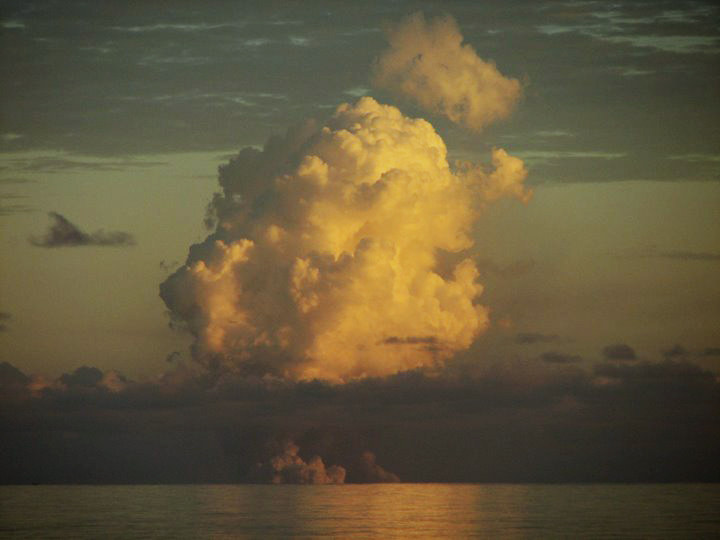
On Monday, a Tongan volcano that had been quiet since 1988 blew its stack. The twin islands of Hunga Tonga and Hunga Ha’apai lie about six miles off the southwest coast of Tonga’s main island of Tongatapu, and cap a large seamount that is one of nearly 40 volcanoes that dot the area’s underwater landscape.
The submarine volcano has been shooting off spectacular plumes of smoke, ash and pumice all week, creating a spontaneous tourist attraction. Official warnings have fallen on deaf ears as more boats and planes head out with paying passengers eager to be eyewitnesses.
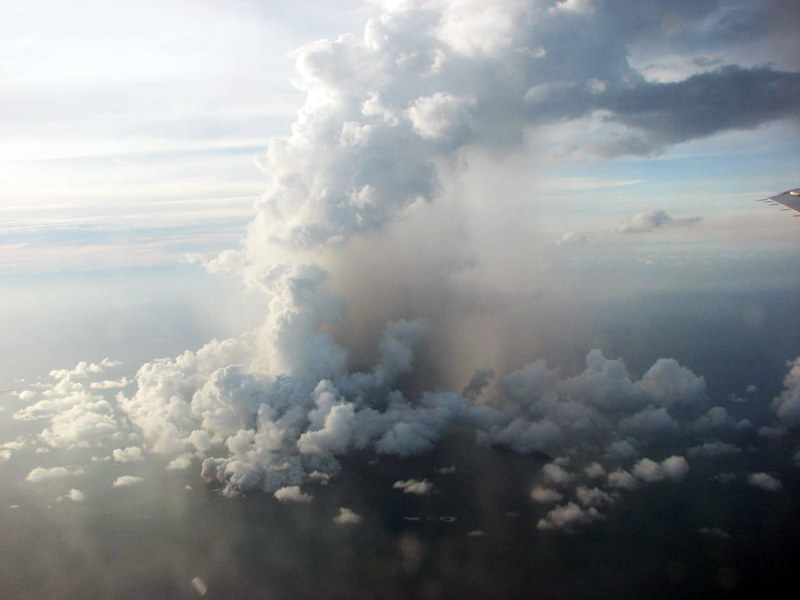
The eruptions aren’t expected to cause any damage to surrounding islands, though enormous rafts of pumice will likely hamper the passage of many Puddle Jumpers. If they value their gelcoat, Puddle Jumpers would be wise to sail around any rafts they come across.
Yesterday a 7.9-magnitude earthquake that shook an area 180 miles away, and earned a tsunami warning that was cancelled two hours later, was unrelated to the eruption.
Heavy Lifting
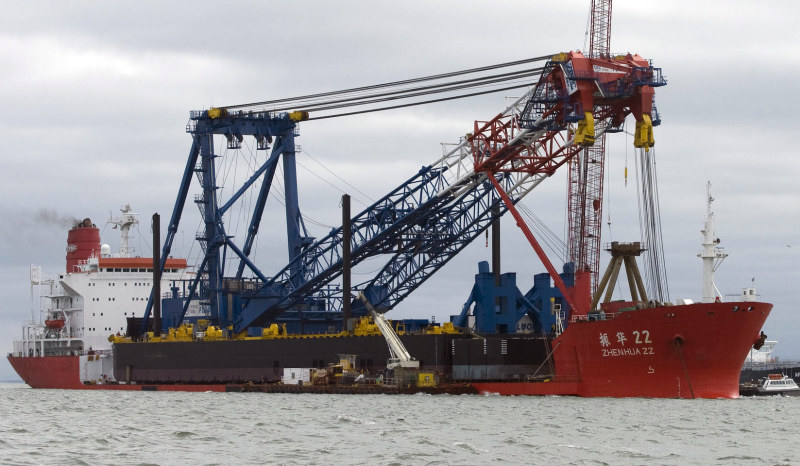
You may have seen it already, and if not, you won’t be able to miss it when you’re sailing near Treasure Island. “It” is a gargantuan crane built to help with construction on the Bay Bridge’s new eastern span. Even gargantuan doesn’t do the Left Coast Lifter justice. Just the barge that supports it (built in Oregon) is 400 feet by 100 feet wide and cost $20 million to build. The crane, constructed in China, cost $30 million. Its 328-ft boom weighs almost 1,000 tons, is some 30 stories high and can lift 1,800 tons — the equivalent of a 270-ft medium duty Coast Guard cutter. It arrived in the Bay a week ago aboard a ship, and was offloaded yesterday when the specially-prepared ship flooded its ballast tanks and partially ‘sunk’ itself, allowing the crane to float free.
The Lifter will be used to hoist parts of the main roadway, as well as the 525-ft main tower for the self-anchored suspension bridge. The ‘new’ portion of the bridge, at $6 billion-plus, is the largest public works project in state history. You’ll recall that the project was started after the existing double-decker span proved vulnerable during the Loma Prieta earthquake, which took place 20 years ago this October.
Boaters should be aware that some areas of the Bay east of Treasure Island may be closed at various times while the Left Coast Lifter does its work. Keep an eye on ‘Lectronic Latitude for when and where those restrictions will occur.
Incredibly, although the Left Coast Lifter is the largest floating crane ever to operate on the West Coast, it is not the largest floating crane. That distinction belongs to Japan’s ‘Yoshida’ crane, which can lift 3,700 tons — the equivalent of a full-size, 380-ft Coast Guard high-endurance cutter.
Panama Canal YC Bulldozed
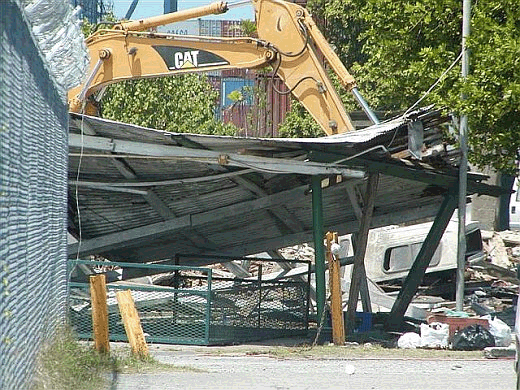
The Panama Canal Yacht Club in Colon, on the Caribbean end of the Panama Canal, is no more. According to reports, a container yard next door to the club has been trying for years to acquire the property. When a court order arrived on February 26 granting them the right to close PCYC, that was all the go-ahead they needed. A bulldozer crashed through the fence the next morning and made short work of demolishing the clubhouse, bar, restaurant and other buildings.
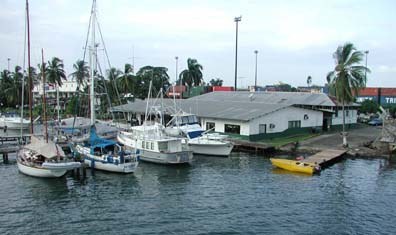
Cruisers on the Flats anchorage may still use the dinghy docks until April 1, but containers now block road access into the former club area, so it’s a bit of a walk through stacks of containers to access taxis and the main road. Anyone who has a boat at the dock should move as soon as possible and certainly no later than the end of the month. For alternative facilities for cruisers on both sides of the Canal, check out www.panamarina.com.
Ericsson 3 Leads Volvo Pack Toward Rio
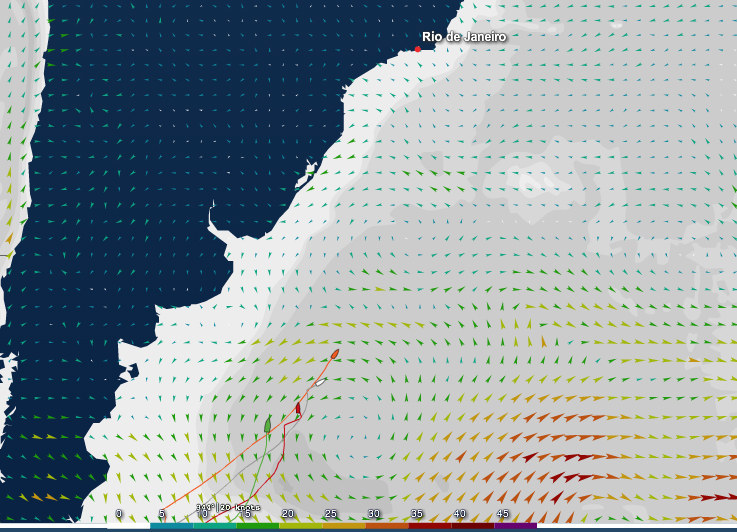
What was only a 50-mile lead yesterday has doubled as Ericsson 3 leads the pack toward Rio in the Volvo Ocean Race. Thirty-four days into the bruising 12,800 mile leg, the ‘nordic boat’ from the Ericsson Racing Team’s stables is pushing on ahead. Driven by 59-year-young skipper Magnus Olsson and a crew that started this leg five hours late having sailed pretty much continuously since returning to Singapore for structural repairs during Leg 4, Ericsson 3 were first at the Cape Horn Scoring Gate and are in a good position to put some more points on the scoreboard. Stablemate, current leg runner-up, and overall race leader Torben Grael’s Ericsson 4 maintains a 100-mile edge over Ken Read’s Puma, which in turn has roughly the same lead on Ian Walker’s Green Dragon. But don’t call it done just yet; there should be a lot of compression in the last thousand miles to go until the finish, as a high pressure builds in front of the leaders. You can keep apprised of all the race’s latest developments as the fleet approaches Rio here.
